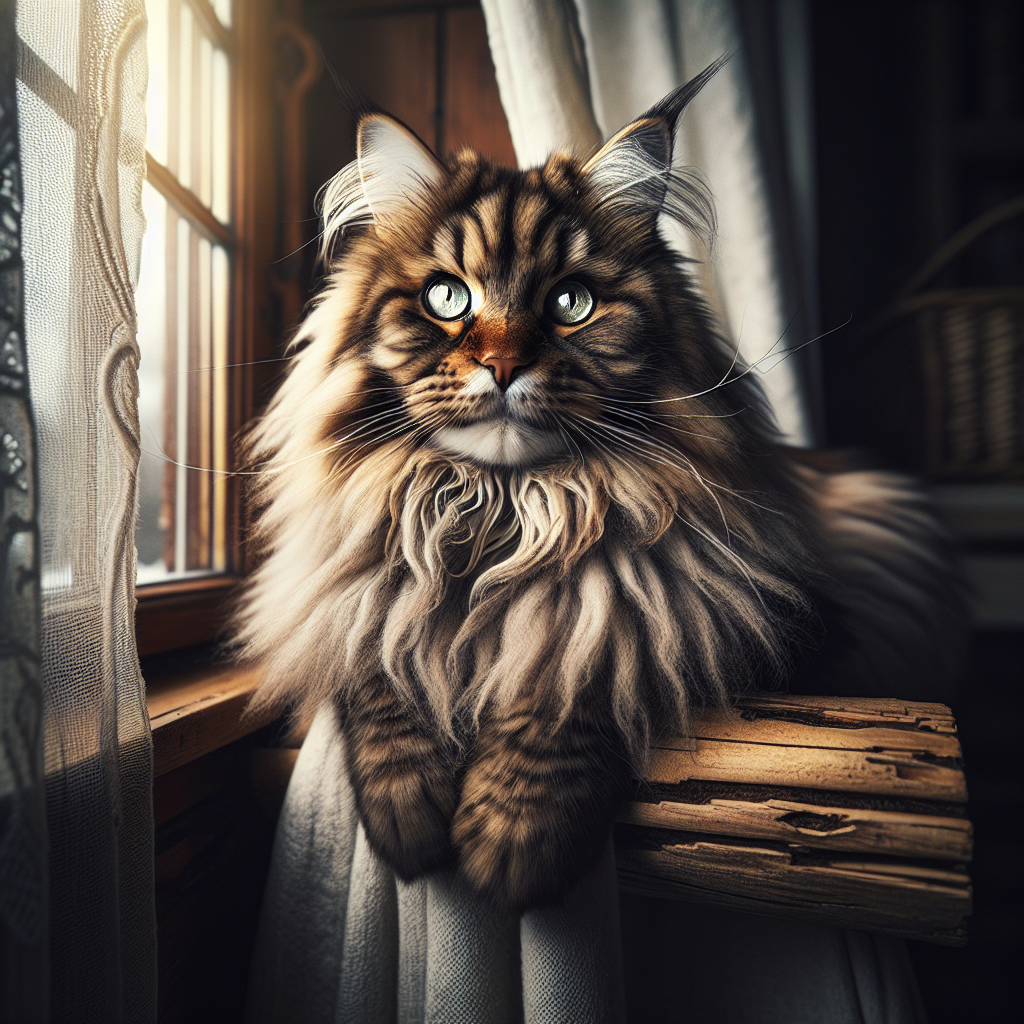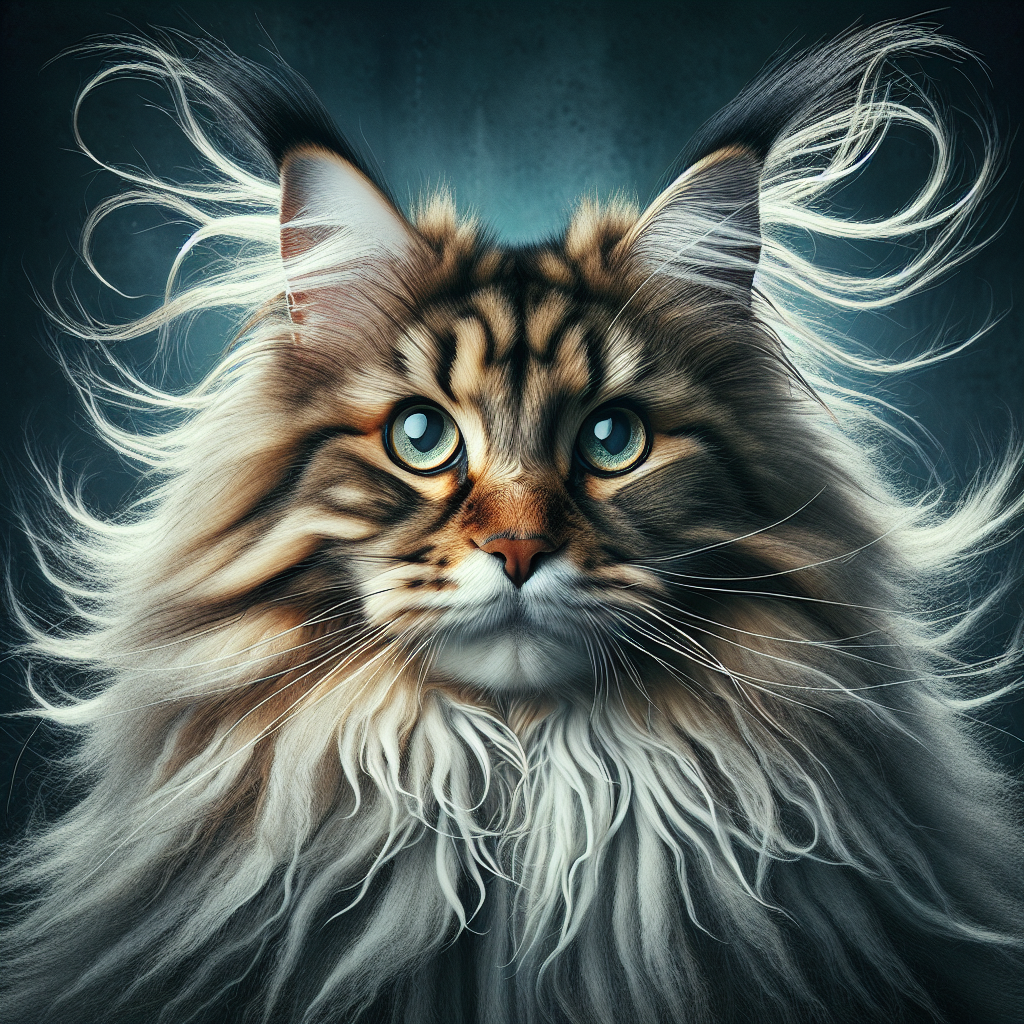Tabby cats are known for their distinct coat patterns, but can they also have long hair? If you’ve ever wondered about the possible existence of long-haired tabby cats, this article will answer your question. We’ll explore the fascinating world of tabby cats and uncover whether or not they can possess luxurious, flowing locks. Get ready to be amazed by the diversity and beauty of these charming felines!
Can Tabby Cats Have Long Hair?
Tabby cats, known for their beautiful coat patterns, can have different hair lengths, including long hair. In fact, there are numerous breeds of tabby cats with long hair. These cats have a charming and distinctive look, making them even more appealing to cat lovers. In this article, we will explore the world of tabby cats and delve into the different types of tabby cats, their physical characteristics, and the specific grooming needs and health considerations for long-haired tabby cats.
What is a Tabby Cat?
To begin, let’s define what exactly a tabby cat is. A tabby cat refers to a specific coat pattern rather than a breed. It is the most common coat pattern among domestic cats. Tabby cats can have various coat colors, but they all share similar markings, including stripes, spots, or swirls on their fur. These markings can be found on their bodies, faces, and tails. Tabby cats also have a distinctive ‘M’ shape on their foreheads, which is often considered a characteristic feature of their breed.
Different Types of Tabby Cats
Within the category of tabby cats, there are several different types based on their specific coat patterns. Let’s take a closer look at these types:
-
Classic Tabby: Classic tabby cats have bold, marbled patterns on their fur. They often have swirls or bullseye-shaped markings on their sides, which give them a majestic appearance.
-
Mackerel Tabby: Mackerel tabby cats have narrow and parallel stripes on their bodies, resembling the bones of a fish skeleton. This type of tabby pattern is most commonly seen in domestic cats.
-
Spotted Tabby: Spotted tabby cats have spots instead of stripes on their coats. These spots can be large or small and are scattered all over their bodies.
-
Ticked Tabby: Ticked tabby cats have a unique coat pattern where each individual hair is striped with different colors. This gives their fur a salt-and-pepper appearance.
-
Patched Tabby: Patched tabby cats, also known as tortoiseshell tabbies, have a combination of tabby patterns and calico patterns. Their coats display patches of different colors, creating a beautiful mosaic effect.

Physical Characteristics of Tabby Cats
Apart from their distinctive coat patterns, tabby cats also possess certain physical characteristics that set them apart from other breeds. Let’s explore these characteristics:
-
Coat Colors: Tabby cats can have a wide range of coat colors, including brown, gray, black, and even red or cream shades. The intensity of these colors can vary among individual cats.
-
Distinctive Facial Markings: Most tabby cats have striking facial markings, including the aforementioned ‘M’ shape on their foreheads. They may also have lines extending from their eyes or dark patches around their cheeks, which add to their unique appearance.
-
Body Structure: Tabby cats typically have a sturdy and muscular body structure, reflecting their hunting instincts. They have powerful legs and a well-proportioned body, allowing them to be agile and graceful.
-
Size and Weight: The size and weight of tabby cats can vary depending on their breed and individual genetics. Some tabby breeds, such as Maine Coons, are known for being relatively large and heavy cats, while others may have a more average size.
Understanding Cat Hair Length
Hair length in cats is determined by a combination of genetic factors. Some cats naturally have short hair, while others have long hair. It’s important to understand the factors influencing hair length in order to appreciate the variations seen among different cat breeds, including tabby cats.
-
Factors Affecting Hair Length: Several factors contribute to the length of a cat’s hair. These factors include genetics, breed standards, and even seasonal changes.
-
Typical Hair Lengths in Cats: Cats can have short hair, medium hair, or long hair. Short-haired cats, such as the common domestic shorthair, have fur that is typically less than an inch in length. Medium-haired cats have fur that ranges from one to three inches, while long-haired cats’ fur can exceed three inches in length.
-
Recognizing Long-Haired Cats: Long-haired cats are characterized by having fur that grows longer than usual. This results in a thicker coat and often requires more grooming to keep it looking tidy and healthy. Long hair can have various textures, ranging from silky and smooth to thick and fluffy.

Long-Haired Tabby Cats
Now that we understand the basics of hair length in cats, can tabby cats have long hair? The answer is a resounding yes! Tabby cats can indeed have long hair, and they look absolutely stunning with their unique tabby patterns combined with luxurious, flowing locks.
-
Genetics and Long Hair: The presence of long hair in tabby cats is determined by their genetic makeup. Certain genes control the length and texture of a cat’s fur, and when these genes interact in certain ways, long hair can be the result.
-
Breed Standards for Long-Haired Tabby Cats: Some cat breeds specifically recognize long-haired tabby cats. These breeds have established breed standards that include tabby markings and long hair as desirable traits. Examples of such breeds include the Maine Coon, Norwegian Forest, Siberian, Turkish Van, American Bobtail, and Persian.
Inherited Coat Length
To understand how long hair is inherited in tabby cats, we need to explore the genetics behind coat length inheritance.
-
Genetic Inheritance: Coat length in cats is influenced by multiple genes. Both parents contribute genetic information, and the specific combination of genes determines the coat length of the offspring.
-
Hair Length Determination: In general, the allele for long hair (L) is dominant over the allele for short hair (l). This means that if a cat inherits the allele for long hair from either parent, it will have long hair. However, if a cat inherits the allele for short hair from both parents, it will have short hair.
-
Coat Length Variability: It’s important to note that even within a litter of tabby cats, there can be variations in coat length. Not all tabby cats from the same litter will have the same hair length, as other genetic factors, such as those controlling tabby patterns, can also come into play.
Breeds with Long-Haired Tabby Varieties
As mentioned earlier, several cat breeds recognize and appreciate the combination of long hair and tabby patterns. Let’s take a closer look at some of these breeds:
-
Maine Coon: Maine Coon cats are one of the largest domestic cat breeds. They have a thick, shaggy coat with tabby patterns, making them look regal and majestic.
-
Norwegian Forest: The Norwegian Forest cat is known for its long, thick, water-repellent coat. These cats have tabby markings that help them blend into their natural surroundings.
-
Siberian: Siberian cats have a beautiful, semi-longhaired coat that requires regular grooming. They come in various colors and patterns, including stunning tabby combinations.
-
Turkish Van: Turkish Van cats have a unique coat that is semi-longhaired and water-repellent. Their tabby patterns can be seen on their bodies, with the distinctive ‘M’ shape on their foreheads.
-
American Bobtail: American Bobtail cats have a short tail and a semi-longhaired coat. Their tabby patterns, combined with their playful and affectionate nature, make them a popular choice among cat enthusiasts.
-
Persian: The Persian cat is known for its luxurious, long, and silky coat. While a solid color Persian is more common, there are also long-haired tabby Persians that exhibit the beautiful tabby patterns on their stunning coats.
Grooming Needs of Long-Haired Tabby Cats
Caring for long-haired tabby cats requires regular grooming to maintain their coat’s health and appearance. Let’s explore the grooming needs specific to these cats:
-
Regular Brushing: Long-haired tabby cats should be brushed regularly to prevent matting and tangling of their fur. This helps to keep their coats clean and free of dirt, as well as reduce shedding.
-
Bathing and Drying: Giving your long-haired tabby cat an occasional bath can help keep their coat in top condition. However, it’s important to use cat-friendly shampoos and to thoroughly dry their fur afterward to prevent skin issues.
-
Preventing Matting: Long-haired cats are prone to matting, especially in areas where their fur tends to tangle, such as behind the ears and in the armpits. Regular brushing and gentle detangling can prevent mats from forming and causing discomfort to your feline friend.
-
Trimming Nails: While not directly related to grooming their fur, regular nail trims are essential for the well-being of any cat. This is especially important for long-haired tabby cats, as they may be more prone to getting their long nails caught in their fur.
-
Cleaning Ears and Eyes: Keeping your cat’s ears and eyes clean is crucial for their overall health. Long-haired cats may be more susceptible to debris buildup in these areas, so gently cleaning them with appropriate cat-safe products can help prevent infections.
Conclusion
In conclusion, tabby cats can indeed have long hair, and they are a sight to behold. Their unique coat patterns combined with flowing locks make them even more mesmerizing. Whether you have a Maine Coon, a Norwegian Forest, or any other long-haired tabby breed, it’s important to understand and fulfill their grooming needs to ensure their well-being and maintain their beauty. With regular brushing, occasional baths, and proper care, you can enjoy the companionship and appreciate the inherent beauty of long-haired tabby cats.

